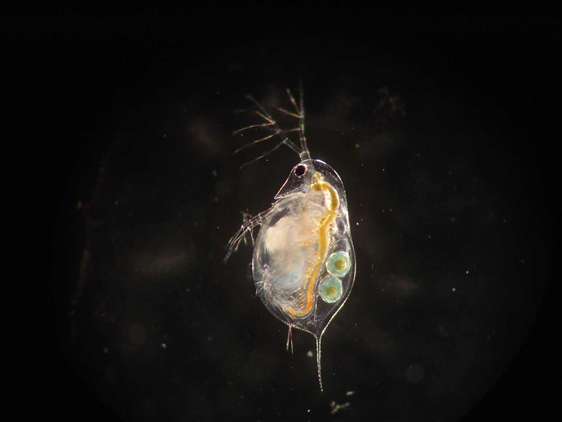Better models to forecast effects of environmental change on food webs

Extinctions, variations in population densities, and large algal blooms in waters are examples of expected effects of global warming and nutrient over-fertilization. Wojciech Uszko at Umeå University shows how simple mathematical models can help us understand mechanisms behind these phenomena and forecast consequences of environmental change.
In his dissertation, Uszko investigated how predator-feeding behaviour, global warming, and nutrient enrichment affect the basic building blocks of food webs, i.e. predator‒prey interactions. Just a small increase in temperature or in the availability of a limited nutrient can theoretically push the populations of predators and their prey from stable coexistence at approximately constant densities to wild oscillations, or even to predator extinction. But how and when this happens is still debated by ecologists.
To address this question, Uszko studied the feeding behaviour of the model organism water flea (a very widespread zooplankter), Daphnia, in the lab and analysed mathematical models describing the population dynamics of Daphnia and their algal food in the open waters of lakes.
Even though nutrient enrichment can shift predator‒prey dynamics from stable to oscillatory, predators and prey can coexist at stable densities if the predator's feeding behaviour is such that the predator reduces its feeding effort at low prey densities.
"Through my lab experiments, I found that Daphnia show exactly this feeding behaviour, something that has been previously overlooked despite Daphnia being a well-studied organism," says Uszko.
Whether predator and prey coexist stably or not does also depend on environmental temperatures, however.
"My results from the lab experiments and modelling show that there is an optimal temperature range for feeding and that Daphnia have low food intake rates both below and above optimal temperatures. This, in turn, allows their algal prey to periodically escape from predator control, leading to population oscillations and eventually predator extinction at temperatures far away from optimal."
Uszko proposes in his dissertation a single, coherent theoretical framework that can unify a multitude of, often contrasting, previous findings on the effects of temperature and enrichment on population stability.
"The knowledge that a predator reduces its feeding effort at low prey densities or not, and that predator performance declines both below and above the optimal temperature range are two crucial features to correctly predict the consequences of warming and nutrient enrichment. These two functions have previously been neglected in models of global change effects on food webs."
The model predictions were compared to the results of a field experiment. The model predictions go hand-in-hand with experimental results, showing that warming can lead to a massive bloom of phytoplankton and, counter-intuitively, near-extinction of zooplankton. It turned out that in warmer conditions, algae outgrow their zooplankton predators and therefore run into nutrient limitation. As a result algae are abundant but of extremely poor food quality and then cannot support zooplankton growth.
"Warming effects can be very variable, and often counter-intuitive. Identifying a few critical processes and incorporating them into mathematical models can help ecologists to correctly describe and forecast effects of environmental change on food webs," says Uszko.
More information: The dissertation is available online: urn.kb.se/resolve?urn=urn:nbn:se:umu:diva-124876
Provided by Umea University

















